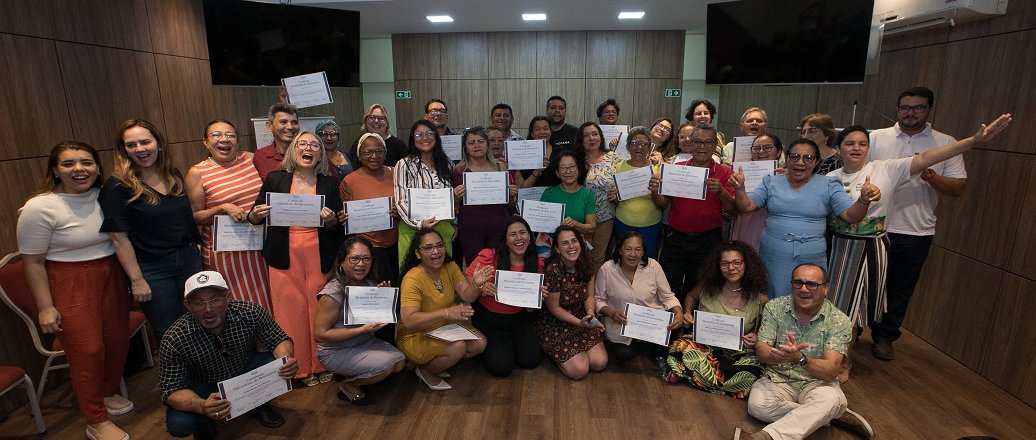Hydro and Albras, through the Hydro Sustainability Fund, in collaboration with the Museu da Pessoa and with the support of IBS (Barcarena Sustainable Initiative), bring you the 'Memórias de Barcarena' project, which tells the rich history of the municipality through the eyes of those who lived it. The research and interviews bring inspiring stories about the tradition, culture, and life of the people of Barcarena. These stories will be shared in a book and a documentary scheduled for release on November 29th in Barcarena.
Additionally, the project offered to the community training in Social Memory Technology, with the final meeting and certification of participants taking place on Saturday, the 21st, in Barcarena. There were five meetings with the aim of equipping the residents of Barcarena so that they can share their own stories using the Life Story Recording Methodology.
The project celebrates the diversity of Barcarena's society and recovers memories from former residents, including descendants of the founders, indigenous people, quilombolas, and riverine communities, adding the community's perspectives to the municipality's narrative and showcasing the richness of this people's identity and its nuances.
One of these stories is that of Antonio Palheta dos Santos, an electrician and representative of the Catholic community of Vila do Conde, where he was born in 1957. He is still one of the main organizers of the religious festivities in the village, including the Círios of São Francisco Xavier and São João Batista, the most important ones in the region. "I heard a lot of stories. We didn't have television, we didn't have radio, we didn't have cell phones. What was our pastime? Our parents, the older people, would gather and tell legends. My mother used to say that where we lived, there was a crossroad that no one could pass after midnight because something that haunted people always appeared. They called it 'visagem'. She saw these things in the woods," says Antonio.
With the meticulous work of the Museu da Pessoa, it became possible to catalog these memories, which tell a fascinating story full of courage and liveliness, a tribute to the people of Barcarena. "My grandmother used to say that here, on this land (where the Cabana Clube in Barcarena is located today), there were many hangings. There was a samaumeira tree, and they used to tie the rope to it. Who knows if we're not standing on top of some soldier's grave who fought in the Cabanagem? Workers are even afraid to stay here alone because they see many ghosts. They say they hear chairs being dragged and see many souls, white figures, people walking. When they pay attention, there's no one there; the person disappears," recounts Mário Assunção do Espírito Santo, 48, the son of the Gibrié de São Lourenço quilombo, one of the largest in Barcarena, with land registered since 1709. Mário is an educator and one of the popular leaders advocating for the preservation and respect of indigenous and Afro-descendant communities in Barcarena, fighting for environmental conservation and the recognition of traditional land ownership.
"For a long time, Barcarena only had a few small villages, a few families living in Conde, Itupanema, São Francisco. Those were the centers. In Conde, in São Lourenço, there were about fifteen families. But with the arrival of projects, everything changed. People came from various places. It was a good period of employment, with jobs as security guards, masons, carpenters. I myself worked as a mason and was able to provide an education for my children," says Master Valter dos Santos Freitas, better known as Master D'Bubuia, born in the Gibrié de São Lourenço quilombo, on the banks of the rivers of Barcarena. Since childhood, he has been a fisherman, and in the 1990s, he decided to translate his Amazonian and quilombola experience into the strings of the banjo: he became a master of carimbó and is preparing his first album.
: October 26, 2023







